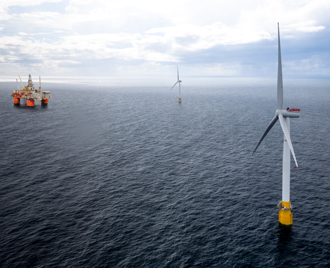Responding to investor pressure to slash emissions, Europe's largest integrated oil and natural gas companies are flexing their muscles by expanding investments in cleaner energy, including electricity, LNG and renewables.
The oil industry continues to be hard pressed by activist investors to set and publish emissions reductions targets in alignment with goals of the Paris Agreement on climate change. In addition to cutting emissions, the biggest oil producers are investing billions in clean energy and pushing natural gas as a transition fuel.
Apart from just setting short-term emissions reduction targets for the first time ever, Royal Dutch Shell PLC is leading the pack in the race toward greener energy, which also includes new energy technologies, as well as traditional low-carbon electricity. Starting in 2020, the Anglo-Dutch supermajor plans to invest $1 billion to $2 billion per year into new energies, with the intent to become the largest power company in the world by 2035.
"We see a significant move to electrification," Shell's director of gas and new energies Maarten Wetselaar said at CERAWeek by IHS Markit in Houston on March 11. For retail and business customers, "it is quite plausible that 20 years from now, they will be only using electricity," Wetselaar added.
In that same time frame, the electricity business will be "radically different if electrification is going to take place anywhere near the scale needed for the Paris Agreement to be delivered," Wetselaar added.
Like many of its rivals over the last few years, Shell has been expanding in the power sector, buying U.K. power supplier First Utility Ltd., European electric vehicle charging station company The New Motion BV, and a stake in German battery firm sonnen GmbH.
To reflect its growing expansion into the global power and renewable energy sector, yet retaining a solid presence in the oil patch, Norway's Equinor ASA changed its name in 2018 from Statoil ASA.
Being a pure oil and gas player, "Our strategy is to develop as a broad energy company. But this means still producing oil and gas …with the lowest possible carbon footprint," Equinor CEO and President Eldar Sætre said at CERAWeek on March 11.
While Equinor is currently exploring solar investments, "We are a pretty big player when it comes to offshore wind production, mainly in the United States and Germany," Sætre added.
Source: Equinor |
To reduce the Norwegian economy's exposure to risks from long-term low oil prices, the Norwegian government decided in early March to exclude oil and gas exploration and production companies from its sovereign wealth fund.
While some analysts have said this decision displays that investors are losing confidence in the oil and gas sector, the decision does not include integrated companies such as Shell and the state-controlled Equinor, which are accelerating their push away from fossil fuels by expanding operations across the value chain.
"There are no plans to divest shares in Equinor, not at all," Sætre said in Houston.
Until recently with a move into the offshore wind sector and LNG, TOTAL SA's renewables investments had focused on solar, including the acquisition of SunPower Corp. and a stake in power producer Eren Renewable Energy, now known as Total Eren SA.
"The only way to reduce CO2 emissions in the next 20 years is indeed by having a significant substitution of coal by gas in power generation," Arnaud Breuillac, President of Exploration & Production at France-based Total, said at CERAWeek on March 11.
Pushing into the natural gas and electricity space, Total acquired in 2018 ENGIE SA's upstream LNG business for almost $1.5 billion, paving the way for Total to manage an overall volume of about 40 million tonnes per year by 2020. The acquisition positioned Total as the second-largest global LNG player among the majors, with a worldwide market share of 10%. Later in 2018, Total wrapped up a deal to acquire a 74.33% interest in French power and gas retailer Direct Energie.
In a 2018 earnings conference call in early February, Total officials said for the next two years, the company will invest $4 billion annually in integrated gas, renewables and power, of which $2 billion to $3 billion will be for LNG and $1 billion to $2 billion will be for electricity. Total's five-year objective is to increase its portfolio from cleaner energy by a total of 10 gigawatts: 3 GW from gas, 5 GW from power and 7 GW from renewables.
As it works to build out its renewables business and reduce its carbon footprint in the next 10 years, Italy's state-controlled Eni SpA announced at its Investor Day on March 15 a new plan to spend €1 billion in the next four years to help achieve its net zero emissions target by 2030.
Like Shell, Eni will develop a clean power business amid the ongoing transition to a low-carbon world. Eni will spend €1.4 billion from 2019-2022 to grow its renewable energy capacity.
"In renewables, we will focus on the development of new solar and wind capacity with a target of more than 10 gigawatts. And we will expand our biofuel capacity, focusing on the second and third-generation feedstocks," Eni CEO Claudio Descalzi said during a March call with investors and analysts.




